- Учителю
- Методическое пособие по английскому языку на тему Техника безопасности
Методическое пособие по английскому языку на тему Техника безопасности
Министерство образования Республики Башкортостан
ГАПОУ Уфимский топливно-энергетический колледж
МЕТОДИЧЕСКОЕ ПОСОБИЕ
«SAFETY FIRST»
по дисциплине: «Иностранный язык»
Уфа
2016.
Аннотация
Основная цель данного методического пособия - подготовка студентов к работе на производстве, которая начинается с соблюдения правил техники безопасности. Пособие подготовлено в соответствии с требованиями Федерального государственного образовательного стандарта и примерной программы по дисциплине «Иностранный язык»
В пособии использованы оригинальные англоязычные тексты, частично сокращенные и адаптированные. Для закрепления материала представлен ряд упражнений, которые помогут в кратчайшие сроки расширить и закрепить лексику , необходимую при сдаче любого экзамена по технике безопасности как на английском так и на русском языках.
Содержание
-
Введение…………..………………………………………………… 4
2. Категории знаков техники безопасности………………………….. 5
3. Обозначения знаков техники безопасности……………………… 10
4. Лексические упражнения ………………………………………… 12
5. Тексты для дополнительного чтения………………………………. 20
-
Заключение ………………………………………………………… 25
-
Список использованных источников………………………………. 26
Safety first
The main causes of accidents in the workplace are not dramatic fires and explosions, but very ordinary accidents that can be easily prevented by workers looking out for their own safety and the safety of others. Many of these accidents are minor, but some cause death or serious injury. The most common cause of accidents is from slips , trips and falls, followed by lifting and carrying. Accidents involving cuts, burns, dropped objects, falling from height, and collisions are also common but often avoidable.
The main preventable measure is safety training. All employees in the oil and gas industry go through regular safety training courses to encourage a strong safety culture. For hazardous areas , employees will be issued with personal protective equipment (PPE) which must be worn in signed areas. Safety boots , hard hats, overalls, gloves, and safety glasses are usually a standard issue. In addition, ear protectors and special trades' equipment such as welding shields, goggles, and gloves will be issued.
Safety signage has to be followed. Signs are classified with different shapes and colours to denote whether they are mandatory , warnings, or giving information. Most signs are independent of language and use standard symbols as ideograms. The meaning of some of these signs is not always immediately obvious and so they should be learnt. Following information signs is practiced in fire drills where workers must follow signs to safe areas. Those working offshore will attend special courses on helicopter escape, use of life jackets and survival craft, and escape through smoke. There are often opportunities for workers to volunteer as fire officers or firest aiders, and special training is given.
Categories of safety signs
Safety signs are divided into categories according to the type of message they are intended to convey. Each category is assigned a specific format and set of colours.
Prohibition Signs

These signs should be used to convey "Do Not" type commands .For example, to indicate that smoking is not allowed or that, where a particular material reacts dangerously with water or water should not be used to extinguish a fire. In the workplace they should be used to reinforce instructions prohibiting dangerous activities. Such instructions, however, should also form part of the employees training. Signs prohibiting an activity consist of a circular red band and single diagonal cross bar descending from left to right at an angle of 45 degrees. The background should be white with the pictogram indicating the nature of the command in black.
Warning Signs
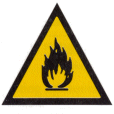
These signs should be used to make people aware of a nearby danger. For example, a flammable liquid store or a laboratory where radioactive substances are in use should have an appropriate warning sign near the entrance. These signs are required by the Health and Safety (Safety Signs and Signals) Regulations and in specific cases by the Dangerous Substances (Notification and Marking of Sites) Regulations .Signs warning of a particular hazard consist of a black band in the shape of an equilateral triangle. The background within the band should be yellow with the pictogram indicating the type of hazard in black positioned centrally on the sign.
Mandatory Signs
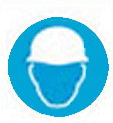
These signs should he used to indicate actions
that must be carried out in order to comply with statutory
requirements. For example , self-closing fire doors that must be
kept closed to comply with the fire risk assessment should be
labeled with "FIRE DOOR KEEP SHUT" signs. An area of a construction
site where hard hats should be worn should also have appropriate
signs at the entry points. It should he noted that the Health and
Safety (Safety Signs and Signals) Regulations do not apply to
mandatory fire instructions, but apply to health and safety
mandatory signs where pictograms are required. The minimum
regulatory requirement is for the sign to include an appropriate
pictogram. There are no pictograms for fire safety instruction
signs and although mandatory in the UK through inclusion in the
requirements of workplace fire assessments, such signs are not
considered as health and safety signs within these Regulations.
Thus the familiar white on blue fire safety mandatory signs using
text only will remain in place and will not have to be changed.
Fire instruction notices, which list actions that occupants must
carry out in the event of a fire are, by convention, written as
white text on a blue background but not in the circular format. The
colours are used to convey the mandatory nature of the instructions
but because of the amount of text normally needed a rectangular
format is used. The general mandatory sign of a white exclamation
mark on a blue circle may be used in conjunction with a fire
instructions notice.
Signs indicating mandatory requirements consist of a blue circle
with the pictogram or text in white positioned centrally.
Safe Condition Signs
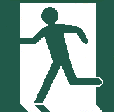
These signs should he used to indicate escape routes, emergency exits, first aid equipment, emergency showers and the others. Safe condition signs consist of a green rectangle or square with the pictogram or text in white positioned centrally. In the same way as for mandatory signs some UK fire safety signs in this category are not required by the Health and Safety (Safety Signs and Signals) Regulations For example "PUSH BAR TO OPEN" is not required to comply and there is no pictogram with that meaning. Such signs are still needed for compliance with other UK legislation.
Exit Signs
In order to comply with the requirements of the Building Regulations, every doorway or other exit providing access to a means of escape, other than exits in ordinary use, should be provided with an exit sign. Installation of signs conforming to British Standard will satisfy both the Building Regulations and the Health and Safety (Safety Signs and Signals Regulations). In general these Regulations will not require any changes where existing fire safety signs containing symbols comply Fire safety signs, notices and graphic symbols.
Provision of exit signs
The regulations place a duty on employers to ensure that safety signs are provided in circumstances where the risk to the health and safety of employees, identified through the risk assessment requirement contained with the Management of Health and Safety at Work Regulations cannot be entirely, engineered or managed out of the workplace. It should be noted that the Regulations do not require safety signs to be used where there are no significant risks to the health and safety of employees. The issue which then requires to be resolved is whether it is necessary to indicate exits with signs. In arriving at a decision the fundamental issue which will underpin the process is whether the risk of injury or death to employees from a fire within a particular premises is deemed to be significant enough to warrant the provision of signs indicating fire exit routes and final exits. If it is deemed that the risk is not significant then there is no need to install the signs. Thus, for example, a small, single storey premises with one clearly visible exit should not require a fire exit sign because it would be obvious to staff that the door is their only means of access and hence there should not be a significant risk to their health and safety from fire by not signing the door as an exit. However, those buildings with more complex internal layouts incorporating multiple exits, some of which may not be readily visible nor frequently used, or where large numbers of the public congregate, will require fire exit signs. They should be complete with directional arrows, if there is a significant risk of individuals not being able to find their way to a place of safety in the event of a fire.
Supplementary information signs
These are signs used to provide additional
information. In the Health and Safety (Safety Signs and Signals)
Regulations these are confined to directional arrows. However ,
they include various text messages as well as arrows under the
description of supplementary signs. To comply with the Regulations
where a direction indication is needed the minimum requirement is
for a supplementary sign in the form of an arrow. The supplementary
text messages in the British Standard such as "Water as an
extinguishing agent prohibited" will be acceptable under the
regulations only if accompanied by an appropriate pictogram. This
is entirely consistent with the philosophy of the British Standard.
Supplementary signs consist of a square or rectangle in the
appropriate colour with the pictogram or text in white and
positioned centrally. The colour should be green where the
information supplements a safe condition sign, red where It
supplements a fire equipment sign or yellow to supplement a warning
sign.
There is a minor conflict between the British Standard and the
regulations on the permitted colour of supplementary signs. They
allow text to be in black on a white background or white on the
appropriate colour. The colour alternative is the only option
permitted in the Regulations. Thus the Regulations can be complied
with by adhering to this option in the Standard.
Fire Fighting Equipment Signs
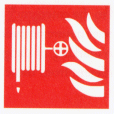
These signs are used to mark the location of
fire fighting equipment and fire alarm activation points. However,
where possible, fire equipment should be positioned where it is
clearly visible. Red to be used as the identifying colour for fire
fighting equipment. If the equipment itself is red this will
satisfy the requirement. Where it is not red then highlighting the
position of fire fighting equipment by colouring background behind
the equipment red may be enough to comply.
Fire equipment signs consist of a red rectangle or square with the
pictogram in white positioned centrally on the sign.
Summary of Safety Signs
The pictograms are as shown in the regulations and the completed sign must be in accordance with the appropriate colour's.Type
Shape
Colour
Pictograms
PROHIBITION SIGNS
These signs prohibit actions detrimental to safety No Smoking
Circular
RED with a white background red band and crossbar.

WARNING SIGNS
These signs give warning of potential risks Triangular
Triangular
YELLOW with black symbol or text
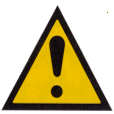
MANDATORY SIGNS
Signs that require actions or activities that will contribute
towards safety
Circular
BLUE with symbol or text in white

SAFE CONDITION SIGNS
These signs indicate exit routes in the event of a fire or
emergency
Rectangular
GREEN with white symbol or text

FIRE EQUIPMENT SIGNS
These signs are used to indicate the location of fire equipment
Rectangular or Circle
Red with white symbols or text

Supplementary Information Signs
Rectangular
Green, Red, Yellow, with White or Black Text

Lexical Exercises:
-
Point to these parts of your body. Say and learn.
Ears eyes face feet fingers
Hands head
-
Look at the personal protection equipment (PPE)/ Complete the sentences below
Ear protectors Hard hat Face guard
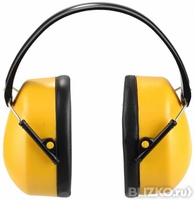
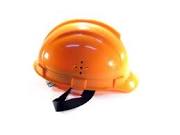
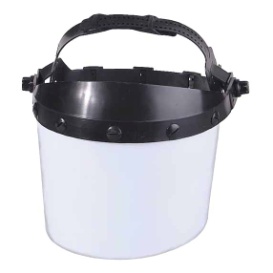
Boots Goggles Gloves


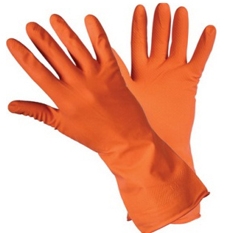
Safety harness respirator
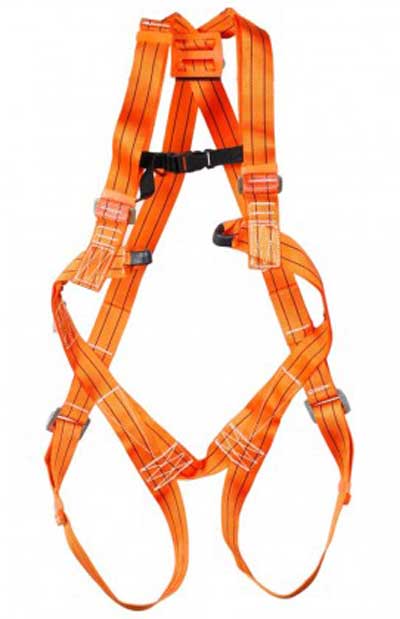

1. A hard hat protects your________
2 A face guard protects your__________
3 Boots protect your _______________
4__________protect your ears from noise
5__________ protect your hands
6__________protect your eyes
-
A _______ protects you from smoke and dangerous fumes
-
A _______ protects you from a fall
-
Safety signs: colours and shapes
Safety signs are very important because the oil and gas industry has many hazards. Hazards are possible dangers like electricity, chemicals, hot things, gas, machines, noise, falling objects, and slippery surfaces. There are four main kinds of safety signs:
-
Black and yellow triangles.
These signs warn us about hazards.
-
Blue and white circles
These signs tell us "You must wear or do the thing in the picture"
-
Red and white circles
These signs usually have a red band across them. They tell us we must not do things.
-
Green and white squares or rectangles
These signs give information about safety.
-
Match the signs with the descriptions given below.


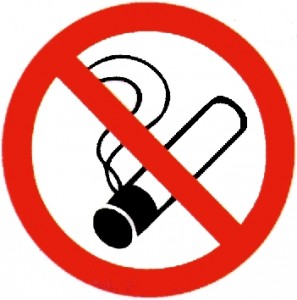


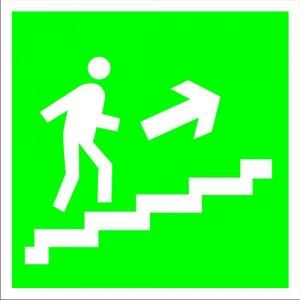
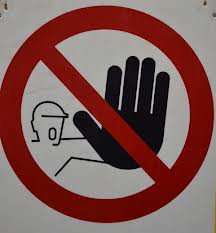

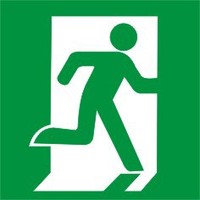
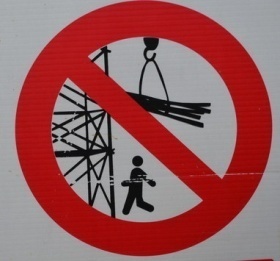




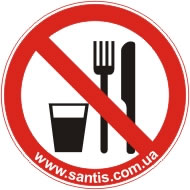
- Wear goggles
- Don't smoke here
- This way to the emergency exit
- Wear ear protectors
- Don't eat here
- Danger! High voltage!
- Fire exit
- Wear boots
- Wear respirator
- Do not enter
- Danger!Radiation
- Danger! Overhead crane!
- This way to the pharmacy
- Do not touch!
- Drinking water is here
-
Read the health and safety officer talking to a team of welders and pipe-fitters
H - health and safety officer
P1- pipe-fitter1
P2- pipe-fitter2
P3- pipe-fitter3
H There are six main hazards for welders. Can you name them?
P1 Electric shock
H Right. So what do we do?
P2 Weld dry. Don't stand in water.
P3 And wear leather shoes and always wear gloves.
H Right . we also check our equipment often. We switch off equipment when we are not using it. Another hazard?
P3 Gas cylinders. Gas cylinders can explode.
H Correct . So how do we stay safe?
P1 Don't drop them!
H Right. How?
P2 Always secure the cylinders. And always move them safely.
H . Ok. And three steps before moving?
P2 Close the valve, remove the regulator , and replace the valve cap. Then use a cart to move a cylinder.
H Right. And always close the valve when you go on break or at the end of the day. Also , you should always wear your safety glasses when you're working. OK, that's two hazards. What else?
P3 Arc rays They burn eyes and skin
H Precautions?
P1 Cover skin and eyes. Never look at the spark. Always use a welder's helmet and gloves.
H . Those things also protect us from arc sparks. Hot sparks can burn clothes and start fires. So wear your protective clothes. Cotton trousers are good. And no pockets! Pockets catch sparks. Another hazard?
P2 Smoke. Smoke from welding can be dangerous .
P1 So we use respirators. And we always know the material we're welding.
H That's right . And indoors, we always use the ventilation system. OK, there's one more hazard on my list . Trips and falls You work in confined spaces, sometimes underground, sometimes high u. So what do you do?
P3 Always think about where you are. Wear a safety harness.
P2 Keep the work area clean and tidy.
H Right
6 . Number the welding hazards in the order you hear them
-
Gas cylinders d) smoke
-
Arc sparks e) electric shock
-
Arc rays f) trips and falls
7. Match each hazard (a-f) in 6 above with a precaution
-
Weld dry.
-
Always move it safely.
-
Cover up skin and eyes.
-
No pockets!
-
Know the material we're welding .
-
Keep the work area clean and tidy.
8.Read again. Tick the pieces of safety equipment you hear.
-
Safety glasses 7. Respirator
-
Welder's helmet 8. Boots
-
Face guard 9. Ventilation system
-
Gloves 10. Ear protectors
-
Cotton trousers 11. Safety harness
-
Welding jacket 12. Leather shoes
9. What safety precautions do you take when you drive a car, or ride a motorcycle or bicycle?
10. Choose the correct words to complete each sentence.
-
We switch off equipment/an equipment
-
There are six main hazard/ hazards for welders
-
Gas cylinder / cylinders can explode.
-
Never look at spark/ the spark.
-
Hot sparks can burn clothes / a clothes and start fires.
-
Smoke/ A smoke from welding can be dangerous.
-
Use cart / a cart.
-
We always know material/ the material we're welding.
-
Cover skin/ a skin and eyes.
-
Don't stand in water / a water.
11.The pictures are from a safety manual for drilling crews. Which person is
1 wearing loose clothes?
2 standing under a load?
3. running up or down steps?
4. eating near chemicals?
5 handling chemicals without PPE?
6 walking below people working?
7 standing between a wall and a moving load?
-
using a broken tool?
-
climbing without a safety harness?
-
doing the right thing : lifting correctly and keeping his back straight?

12. Say what might happen in each situation?
Example:
Machines might catch his loose clothes and injure him.
13.Work in pairs. You work in a drilling crew. You are looking after a new person in the crew. Take turns advising him.
Example
You shouldn't wear loose clothes because machines might catch them.
Texts for supplementary reading
All workers are entitled to work in environments where risks to their health and safety are properly controlled. Under health and safety law, the primary responsibility for this is down to employers.
Worker s have a duty to take care of their own health and safety and that of others who may be affected by your actions at work. Workers must co-operate with employers and co-workers to help everyone meet their legal requirements .
As a worker, if you have specific queries or
concerns relating to health and safety in your workplace, talk to
your employer, manager or supervisor or a health and safety
representative. For more details on employers and your own
responsibilities in law you can read Health and safety law: What
you need to know ![]()
All workers have a right to work in places where risks to their health and safety are properly controlled. Health and safety is about stopping you getting hurt at work or ill through work. Your employer is responsible for health and safety, but you must help. What employers must do for you ?
-
Decide what could harm you in your job and the precautions to stop it. This is part of risk assessment.
-
In a way you can understand, explain how risks will be controlled and tell you who is responsible for this.
-
Consult and work with you and your health and safety representatives in protecting everyone from harm in the workplace.
-
Free of charge, give you the health and safety training you need to do your job.
-
Free of charge, provide you with any equipment and protective clothing you need, and ensure it is properly looked after.
-
Provide toilets, washing facilities and drinking water. 7 Provide adequate first-aid facilities.
-
Have insurance that covers you in case you get hurt at work or ill through work. Display a hard copy or electronic copy of the current insurance certificate where you can easily read it.
-
Work with any other employers or contractors sharing the workplace or providing employees (such as agency workers), so that everyone's health and safety is protected.
What you must do :
1 Follow the training you have received when using any work items your employer has given you.
2 Take reasonable care of your own and other people's health and safety.
3 Co-operate with your employer on health and safety.
4 Tell someone (your employer, supervisor, or health and safety representative) if you think the work or inadequate precautions are putting anyone's health and safety at serious risk. Health and Safety Published by the Health and Safety Executive .
Employer's responsibilities
Under the law employers are responsible for health and safety management. The following provides a broad outline of how the law applies to employers.
It is an employer's duty to protect the health, safety and welfare of their employees and other people who might be affected by their business. Employers must do whatever is reasonably practicable to achieve this.
This means making sure that workers and others are protected from anything that may cause harm, effectively controlling any risks to injury or health that could arise in the workplace.
Employers have duties under health and safety law to assess risks in the workplace. Risk assessments should be carried out that address all risks that might cause harm in your workplace.
Employers must give you information about the risks in your workplace and how you are protected, also instruct and train you on how to deal with the risks. Employers must consult employees on health and safety issues. Consultation must be either direct or through a safety representative that is either elected by the workforce or appointed by a trade union.
The main legislation providing for the health and safety of people in the workplace are the Safety, Health and Welfare at Work Acts . They apply to all employers, employees (including fixed-term and temporary employees) and self-employed people in their workplaces. The Acts set out the rights and obligations of both employers and employees and provides for substantial fines and penalties for breaches of the health and safety legislation.
Employer's duties
The employer has a duty to ensure the employees' safety, health and welfare at work as far as is reasonably practicable. In order to prevent workplace injuries and ill health the employer is required, among other things, to:
-
Provide and maintain a safe workplace which uses safe plant and equipment
-
Prevent risks from use of any article or substance and from exposure to physical agents, noise and vibration
-
Prevent any improper conduct or behaviour likely to put the safety, health and welfare of employees at risk
-
Provide instruction and training to employees on health and safety
-
Provide protective clothing and equipment to employees
-
Appointing a competent person as the organisation's Safety Officer
Employees' duties
The duties of employees include the following:
-
To take reasonable care to protect the health and safety of themselves and of other people in the workplace
-
Not to engage in improper behaviour that will endanger themselves or others
-
Not to be under the influence of drink or drugs in the workplace
-
To undergo any reasonable medical or other assessment if requested to do so by the employer
-
To report any defects in the place of work or equipment which might be a danger to health and safety
Risk assessment and safety statement
Every employer is required to carry out a risk assessment for the workplace which should identify any hazards present in the workplace, assess the risks arising from such hazards and identify the steps to be taken to deal with any risks.
The employer must also prepare a safety statement which is based on the risk assessment. The statement should also contain the details of people in the workforce who are responsible for safety issues. Employees should be given access to this statement and employers should review it on a regular basis.
Protective equipment and measures
The employer should tell employees about any risks that require the wearing of protective equipment. The employer should provide protective equipment (such as protective clothing, headgear, footwear, eyewear, gloves) together with training on how to use it, where necessary. An employee is under a duty to take reasonable care for his/her own safety and to use any protective equipment supplied. The protective equipment should be provided free of charge to employees if it is intended for use at the workplace only. Usually, employees should be provided with their own personal equipment.
The Regulations cover various means of communicating health and safety information. These include the use of illuminated signs, hand and acoustic signals, e.g. fire alarms, spoken communication and the marking of pipe work containing dangerous substances. These are in addition to traditional signboards such as prohibition and warning signs. Fire safety signs, i.e. signs for fire exits and fire-fighting equipment are also covered.
They require employers to provide specific safety signs whenever there is a risk that has not been avoided or controlled by other means, e.g. engineering controls and safe systems of work. Where a safety sign would not help to reduce that risk, or where the risk is not significant, there is no need to provide a sign. The regulations, where necessary, require the use of road traffic signs within workplaces to regulate road traffic and also require employers to maintain the safety signs which are provided by them, explain unfamiliar signs to their employees and tell them what they need to do when they see a safety sign.The Regulations apply to all places and activities where people are employed, but exclude signs and labels used in connection with the supply of substances, products and equipment or the transport of dangerous goods.
Pictograms
The regulations require all signs should use graphic symbols or pictographs to convey its message but it does not prohibit the use of supplementary text. It indicates the intrinsic features required and some are indicated below,
-
The shape and colour's of signboards are set out, in accordance with their specific object (signboards indicating a prohibition, a warning, a mandatory action, an escape route, an emergency or fire-fighting equipment).
-
Pictograms must be as simple as possible and should contain only essential details.
-
The pictograms used may be slightly different from or more detailed, provided that they convey the same meaning and that no difference or adaptation obscures the meaning.
-
The dimensions and colorimetric and photometric features of signboards must be such that they can be easily seen and understood.
Заключение
Данное методическое пособие выполнено в соответствии с требованиями Федерального государственного образовательного стандарта и программы по дисциплине «Иностранный язык». Пособие разработано для студентов 3 курса всех специальностей и помогает в освоении профессиональных компетенций.
В пособии представлены знаки техники безопасности по категориям , разобраны часто встречающиеся риски при работе на производстве. Пособие содержит адаптированные тексты для дополнительного чтения. Отдельным пунктом выделены лексические упражнения, цель которых - помочь студентам освоить тематическую лексику, прежде чем приступать к изложению темы.
Пособие является частью учебно-методического комплекса «Иностранный язык» . Оно может стать базой для создания контрольно-измерительных материалов по указанной дисциплине.
Список использованных источников
Основные источники:
-
Агабекян И.П. Английский язык для ссузов: учебное пособие.- М.: ТК Велби, Изд-во Проспект, 2011-.-280с.
-
Агабекян И.П., Коваленко П.И. английский язык для технических вузов.- Изд.6-е.- Ростов н/Д: Феникс, 2013.- 349, 1 е.- (высшее образование).
-
Oil and gas /Oxford English for careers, 2012-136c.
-
Кутепова М.М., Английский для студентов химиков.- 2-е изд.,исп.- М.: Книжный дом «Университет», Высшая школа, 2011.-272 с.
-
Куклин И.П Пособие по английскому языку для колледжей.- СПб.: КАРО, 2012.-512 с.
Интернет ресурсы
-
www.shutterstock.com/
-
www.safetyfirst-sfc.com/online_courses.html
-
www.takeonestep.org/
-
www.worksmartontario.gov.on.ca/</</p>
-
www.hsa.ie/eng/Topics/Hazards/